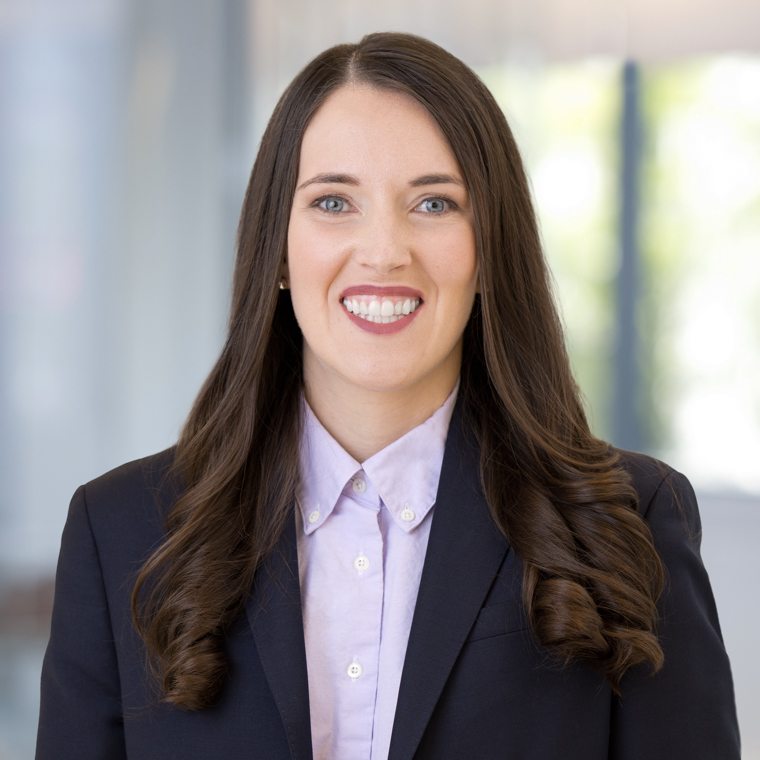Precedential and Key Federal Circuit Opinions
1. WISCONSIN ALUMNI RESEARCH FOUNDATION v. APPLE INC. [OPINION] (2022-1884, 8/28/2024) (Prost, Taranto, and Chen)
Prost, J. The Court affirmed two final judgments of the district court denying Appellant’s request to pursue an abandoned doctrine-of-equivalents theory and entering judgement in favor of Appellee of noninfringement.
In the first lawsuit (“WARF I”), Appellant originally pursued both literal and doctrine-of-equivalents theories of infringement. Before trial, Appellant agreed to drop the doctrine-of-equivalents theory in exchange for Appellee’s agreement not to introduce certain evidence. The jury returned a verdict of literal infringement under the plain and ordinary meaning of “particular” as used in the asserted claims. The Court reversed the jury verdict in a 2018 decision.
On remand, Appellant requested a new trial on infringement on the doctrine of equivalents, which the district court denied.The district court concluded that Appellant had abandoned its doctrine-of-equivalents theory and also held that Appellant’s doctrine-of-equivalents theory would render the term “particular” meaningless. On appeal, Appellant argued that the Court’s 2018 decision adopted a claim construction for the term “particular” that was different from what had previously been understood as the proper construction in the trial. The Court concluded that no change in the claim construction excused Appellant’s failure to present its doctrine-of-equivalents theory to the jury. The Court also concluded that Appellant “affirmatively abandoned that theory for strategic reasons unrelated to claim construction,” and “affirm[ed] the district court’s conclusion that [Appellant] waived its doctrine-of-equivalents theory.”
Appellant asserted the same patent in a second lawsuit against Appellee on later generations of the same products (“WARF II”). Following the remand in WARF I, Appellant attempted to continue WARF II under the doctrine of equivalents. The Court concluded that “WARF I precludes [Appellant] from pursuing a doctrine-of-equivalents theory in WARF II” because “when the district court entered a judgment of noninfringement in WARF I, issue preclusion barred WARF II which accuses essentially the same products of infringement.” The Court concluded “that literal infringement and the doctrine of equivalents are the same issue for issue-preclusion purposes.” Further, the Court concluded that “WARF II is barred by the Kessler doctrine,” which bars “[Appellant]’s second lawsuit against essentially the same products.”
* WilmerHale represented Appellee Apple Inc.
2. BROADBAND ITV, INC. v. AMAZON.COM, INC., AMAZON.COM SERVICES LLC, AMAZON WEB SERVICES, INC. [OPINION] (2023-1107, 9/3/2024) (Dyk, Reyna, and Stark)
Reyna, J. The Court affirmed the district court’s grant of Appellee’s motion for summary judgment of invalidity based on subject matter ineligibility under 35 U.S.C. § 101. Appellant’s asserted patents relate generally to electronic programming guides for televisions.
Regarding the first patent family, the Court agreed with the district court at Alice step one that the asserted claims were directed to an abstract idea, specifically, “receiving metadata and organizing the display of video content based on that metadata.” The Court explained that “[r]eordering content within a user guide is not a sufficient technological solution to a technological problem, but rather a results-oriented abstract idea.” Appellant argued that the district court erred by “perform[ing] an Alice step two inquiry within Alice step one.” The Court disagreed because “it may be necessary to analyze conventionality at step one as well as step two,” and here, “analyzing the conventionality of the claimed” system was “proper for determining what the claims were directed to.” At Alice step two, the Court agreed with the district court that the asserted claims did not include “something more” than the abstract idea itself. The Court concluded that none of the elements that Appellant pointed to “transform the claims at step two into something other than the abstract idea itself” because Appellant’s arguments related to the “[a]utomation of an abstract idea,” the claimed content management system which “us[es] conventional server capabilities,” and the claimed templates which are generic, routine, and well-understood in the art.
With respect to the second patent family, the Court determined at Alice step one that the asserted claims are directed to an abstract idea, specifically, of collecting and using a viewer’s video history to recommend categories of video content. At Alice step two, the Court agreed with the district court that “nothing transforms the claims into something other than the abstract idea itself.” The Court rejected Appellant’s argument “that generating displays where categories are arranged based on relevance transforms the claims” because that “is a restatement of the abstract idea of collecting and using viewing history data to recommend categories of content.” The Court also concluded that “identifying a viewer using a log-in step” fails to transform the claims because the logic-in step is well-understood, routine, and conventional.
3. OSSEO IMAGING, LLC v. PLANMECA USA INC. [OPINION] (2023-1627, 9/4/2024) (Dyk, Clevenger, and Stoll)
Stoll, J. The Court affirmed the district court’s denial of Appellant’s motion for judgment as a matter of law and upheld the jury’s verdict of infringement and non-obviousness.
Appellant “contend[ed] that a technical expert opining on infringement must possess the requisite ordinary skill in the art at the time of the alleged invention.” Appellant argued that the verdict could not be supported by the testimony of Appellee’s technical expert because the technical expert became a person of ordinary skill years after the time of the invention. The Court held that “[a]n expert need not have acquired that skill level prior to the time of the invention to be able to testify from the vantage point of a person of ordinary skill in the art.” Rather, an expert can acquire the necessary skill level later and develop an understanding of what a person of ordinary skill knew at the time of the invention.” Thus, “the proposed timing requirement [wa]s not a basis for excluding [Appellee]’s expert testimony as a matter of law.” Nonetheless, the Court recognized that “[i]n practice, the fact that the expert was not a person of ordinary skill at the time of the invention may well be used during cross examination to undermine the credibility of the expert.”
On infringement, the Court concluded that the jury’s infringement verdict was supported by substantial evidence. The Court also concluded substantive evidence supported the jury’s findings necessary to support the verdict that the asserted patents are not invalid as obvious.
4. PARKERVISION, INC. v. QUALCOMM INCORPORATED, QUALCOMM ATHEROS, INC. [OPINION] (2022-1755, 2024-2221, 9/6/2024) (Lourie, Mayer, and Stark)
Stark, J. The Court vacated the district court’s grant of summary judgment of non-infringement based on collateral estoppel arising from a prior infringement suit against Appellee on a related patent (“ParkerVision I”), reversed the district court’s exclusion of testimony by Appellant’s validity expert and infringement experts, and remanded for further proceedings. Appellant’s patents relate generally to down-conversion and up-conversion of electromagnetic signals in wireless communications technology.
Appellant “contend[ed] that the district court erred in granting summary judgment of non-infringement based on the purported collateral estoppel effect of ParkerVision I. ParkerVision I had ended in the Court affirming the district court’s grant of judgment as a matter of law of non-infringement of a related but different patent directed to down-conversion. The accused products in the present suit operated in the same manner as the products accused of infringement in ParkerVision I. The district court granted summary judgment of non-infringement of the down-conversion claims, concluding that there was no material dispute that the asserted claims were materially similar to those in ParkerVision I. The Court concluded that “[t]he district court’s analysis suffered from several errors.” First, the district court erred by failing to assess claim scope through the ordinary claim construction process and ignoring the relevant intrinsic evidence in comparing the scope of the asserted claims with the scope of the claims asserted in ParkerVision I. The district court instead “turn[ed] directly to the extrinsic evidence,” “particularly [Appellee]’s expert’s opinion.” “Second, the district court erred by treating [Appellee]’s expert opinion as unrebutted” when Appellant’s expert had “repeatedly opined that there are material differences in the scope of the claims involved in the two cases that would materially alter the question of infringement.” Third, “[t]he district court’s abbreviated claim scope analysis” “was inconsistent” with its approach in denying Appellee’s earlier motion for summary judgment of non-infringement of the down-conversion claims, for which the district court had found a material issue of fact precluded summary judgment based on the opinion of Appellant’s expert. “[T]he record [still] contained the same genuine dispute of material fact that had compelled the denial of the [earlier] motion.”
Appellee had filed for inter partes review of one of the asserted patents, challenging the patentability of both apparatus and method claims relating to up-conversion. The Patent Trial and Appeal Board found the apparatus claims invalid while at the same time determining that Appellee failed to prove the method claims would have been obvious. In another earlier appeal, the Court affirmed the Board’s patentability determinations (“ParkerVision II”). With respect to the method claims that survived the IPR, Appellee filed a Daubert motion seeking the exclusion of the testimony of Appellant’s validity expert on grounds that Parkervision II collaterally estopped Appellant from attempting to contradict any of the Board’s findings. The district court granted the Daubert motion, finding that Parkervision II collaterally estopped Appellant from relitigating characteristics of the prior art on which Appellee’s invalidity contentions rested. On appeal, Appellant argued that the district court erred in applying collateral estoppel to prevent its invalidity expert from offering testimony to support the validity of the method claims that would have been arguably inconsistent with the Board’s findings during the IPR. The Court held that the district court legally erred in excluding the testimony of Appellant’s validity expert based on collateral estoppel.The Court concluded that “a finding underlying an unpatentability decision in an IPR proceeding [does not] collaterally estops a patentee from making validity arguments regarding separate, related claims in district court litigation.” Because a patent challenger must meet a higher burden of proof in the district court, “no finding of the Board (or [the Court’s] affirmance of the Board in Parkervision II) estops [Appellant] from presenting evidence on the unresolved question of whether [Appellee] is able to prove … components of its invalidity contention[] by clear and convincing evidence.”
The district court had excluded certain infringement expert testimony based on its view that the experts’ opinions were unreliable because they were not supported by testing and simulation of the accused products. The Court concluded that the district court committed clear error in excluding this evidence because testing and simulation are not prerequisites for an expert’s infringement testimony to be reliable, and here, the Court found that Appellant’s infringement experts reasonably relied on schematics and technical documents.
5. CONTOUR IP HOLDING LLC, v. GOPRO, INC. [OPINION] (2022-1654, 2022-1691, 9/9/2024) (Prost, Schall, and Reyna)
Reyna, J. The Court reversed and remanded the district court’s grant of Appellee’s motion for summary judgment that the asserted patents were directed to patent ineligible subject matter under 35 U.S.C. § 101. Appellant’s patents relate generally to portable, hands-free, point-of-video (“POV”) action sports video cameras “configured for remote image acquisition and control viewing.”
At Alice step one, the Court concluded that the asserted claims are “directed to a specific means that improves the relevant technology.” Specifically, the asserted claims “require specific, technological means—parallel data stream recording with the low-quality recording wirelessly transferred to a remote device—that in turn provide a technological improvement to the real time viewing capabilities of a POV camera’s recordings on a remote device.” The Court determined that the district court had “characterize[d] the claims at an impermissibly high level of generality,” which “disregard[ed] the disclosed technological means for obtaining a technological result” and “which all but ensured the incorrect conclusion that the claims were drawn to an abstract idea.” Having held the asserted claims “are not directed to patent ineligible subject matter,” the Court did not need to “proceed to the second step of the Alice inquiry.”





